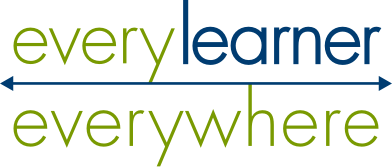Every Learner Everywhere celebrates Black History Month
Higher education is awash in diversity, equity, and inclusion programs. Some target faculty or staff, while others offer more general support. There are programs offered in a multitude of formats: one-day workshops, online courses, communities of practice, book clubs, and hour-long webinars. Some programs are internally developed by Centers for Teaching and Learning or Offices of Diversity and Inclusion and many others are led by external facilitators for whom DEI is a business. But two and a half years after the groundswell of support for Black Lives Matter protests, when institutions of higher learning made all manner of claims to support and promote racial justice on their campuses, can institutions identify and measure changes brought about by DEI programs? Have they hired more diverse faculty, put more people of color in positions of leadership and supported them adequately? Have they adopted teaching and advising practices designed to better serve Black, Latina/o, and Indigenous students? Are work spaces and classrooms more welcoming places? Are pay rates and grading systems more equitable?
In the January 23 installment of WBUR’s On Point radio show, host Anthony Brooks asks, “Lots of organizations require their employees to participate in diversity, equity and inclusion training. But is it effective?” The answers he received from his guest panel were mixed, with some of them pointing out that DEI training can actually exacerbate feelings of bias when participants feel under attack.
But despite the high cost and the uncertain outcomes of DEI programs, for many organizations it is a tangible step they can take to address our national and systemic problem of racial bias. However, DEI programs remain a preliminary, and, let’s face it, easy step to take toward racial justice. But, as Dr. Martin Luther King, Jr. asked in a 1967 speech to the 11th Annual Southern Christian Leadership Conference, “Where do we go from here?”
Dr. King spoke of how Americans are quick to respond to chaos, violence, and crisis, but there is a lack of follow through on next steps. In other words, we’re good at progress that does not cost us too much.
“Overwhelmingly America is still struggling with irresolution and contradictions. It has been sincere and even ardent in welcoming some change. But too quickly apathy and disinterest rise to the surface when the next logical steps are to be taken.” (“Where Do We Go From Here?,” delivered at the 11th Annual SCLC Convention, Atlanta, Georgia, August 16, 1967)
DEI programs alone, particularly the kind that does not ask anything of participants beyond vague intentions of change, are not going to create the change required for higher education to become a truly equitable space for racially minoritized peoples.
The logical next step to addressing racial inequity will involve change that some will see as a true investment in social justice and that others will see as a sacrifice of tradition, standards, privileges, or all three. A model for the kind of next step required was developed by Dr. Robert Livingston, a social psychologist and leading expert on the science underlying bias and racism in organizations and a Lecturer in Public Policy at the Harvard Kennedy School.
Livingston’s model is called PRESS, which stands for problem awareness, root-cause awareness, empathy, strategy, and sacrifice. Throughout the process of change, Livingston’s model asks questions about the condition: “Do I understand the problem?”, the concern: “Do I care about the problem?” and the correction: “Do I know how to correct the problem?”, and the most important question institutions must ask themselves: “Am I willing to do it?”
What are we willing to sacrifice to achieve equity in higher education? We know that changes in attitude can lead to changes in policies, but according to a 2018 study conducted by researchers at McGill University and the University of Utah, the reverse is also true. Changes in laws (and policies) can lead to a change in attitudes. For example, according to recent reporting by Senior Contributor to Forbes, Michael T. Nietzel, more than 80% of U.S. bachelor-degree granting institutions will not require ACT or SAT scores in fall 2023 applications, a policy change made during the initial stages of the Covid-19 pandemic that now is considered as necessary to an equitable admissions process.
“An overwhelming majority of undergraduate admissions offices now make selection decisions without relying on ACT/SAT results,” said FairTest Executive Director Harry Feder in the organization’s news release. “These schools recognize that standardized test scores do not measure academic ‘merit.’ What they do assess quite accurately is family wealth, but that should not be the criteria for getting into college.”
80% of U.S. bachelor-degree granting institutions sacrificed SAT and ACT scores as a tool in the application vetting process, and this change in policy led to wider recognition of the false assumptions embedded in SAT and ACT scores.
DEI programs seek to change attitudes which hopefully leads to changing systems, but we need to also change systems in order to change attitudes. Transforming systems is the next step. We must not “allow apathy and disinterest rise to the surface” because higher education has made significant strides toward racial equity. We must not allow progress to serve as a proxy for equity. We must not allow the voices that cry, “Look how far we’ve come!” to silence those who say, “There is still much to be done.”
In the words of Dr. King, “Let us be dissatisfied until [equity]* is not seen as a problem but as an opportunity to participate in the beauty of diversity.”
At Every Learner Everywhere, we are committed to involving students with minoritized identities in our work so they can help us understand their experiences, help us identify traditions, policies, and assumptions that work against equity, and to help colleges and universities transform systems.
Download What Our Best College Instructors Do*Original text reads: Let us be dissatisfied until integration is not seen as a problem but as an opportunity to participate in the beauty of diversity.


